Content
Penetrating Gymnopil belongs to the Strophariev family and belongs to the Gymnopil genus. Its Latin name is Gymnopil uspenetrans.
What does a penetrating hymnopil look like?
The mushroom cap reaches a diameter of 3 to 8 cm. Its shape is variable: from round in young specimens to convex and even outstretched in more mature representatives of the species.
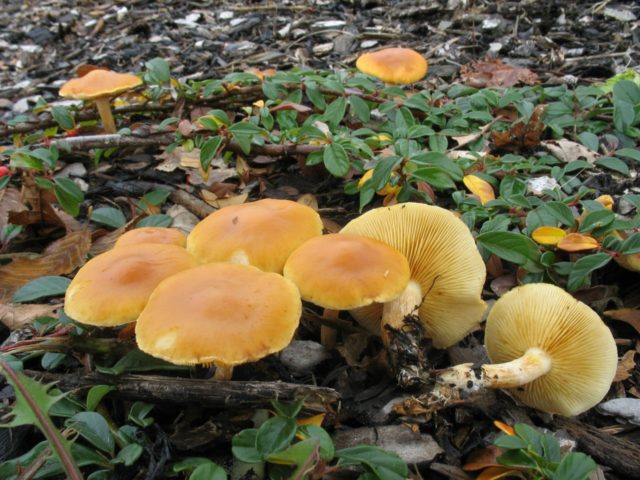
At any stage of growth, a tubercle is present in the center of the cap
The color of the cap is brown with reddish, darker in the center. The surface is dry and smooth to the touch, after moisture it becomes oily.
The plates are narrow, but often located, weakly descending along the pedicle. In young fruit bodies, they are yellow, but as the fungus grows, they change their shade to rusty brown. The same color and spore powder, which in the penetrating hymnopil is released in abundant quantities.
The leg is variable in length: there are specimens reaching 3 cm in height, in some mushrooms this figure is 7 cm. It is sinuous in shape, up to 1 cm thick. The color is brownish-reddish, but a lighter shade than on the cap. The surface of the pedicle is of a longitudinal fibrous type, partially covered with a white coating, there is no ring.
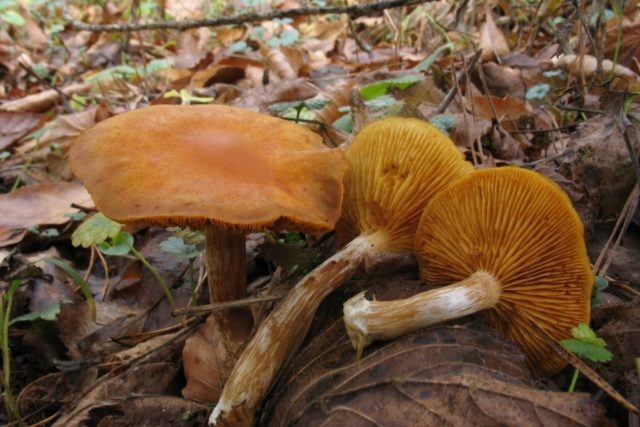
Inside, the pulp is light brown, presented in the form of fibers
Juno's hymnopil is one of the counterparts of the one who penetrates. He has a yellow or orange large cap, reaching a diameter of 15 cm.On its surface, upon detailed examination, you can find numerous scales. As it grows, the hemispherical cap turns into an outstretched one with wavy edges. There is a ring on the leg, and it itself is thickened at the base, tapered in shape. The hymnopil of Juno is widespread everywhere, prefers oaks, is capable of parasitizing on trees.
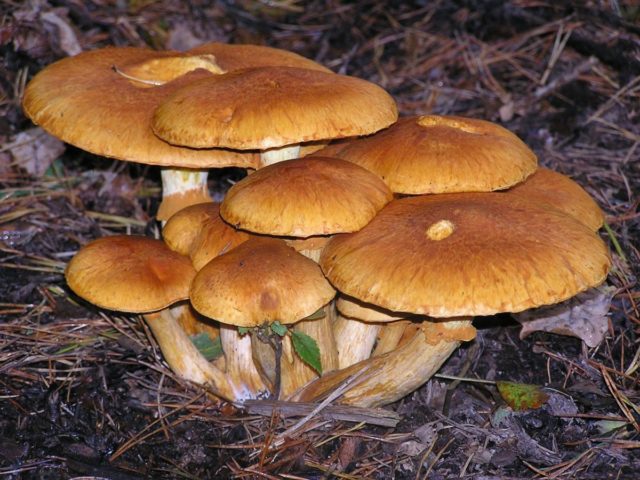
The mushroom is absolutely inedible, and in ancient times it was considered a strong hallucinogen, therefore it is not taken as food
Another species that has an external resemblance is the disappearing hymnopil. Adult fruiting bodies have a flat-convex cap from yellow-orange to brown color. Some specimens have a tubercle in the center. The pulp is dry and smooth to the touch. A distinctive feature of the double is a bitter taste and a pleasant aroma, similar to that of a potato.
The mushroom grows on coniferous or broad-leaved species, often found in North America.
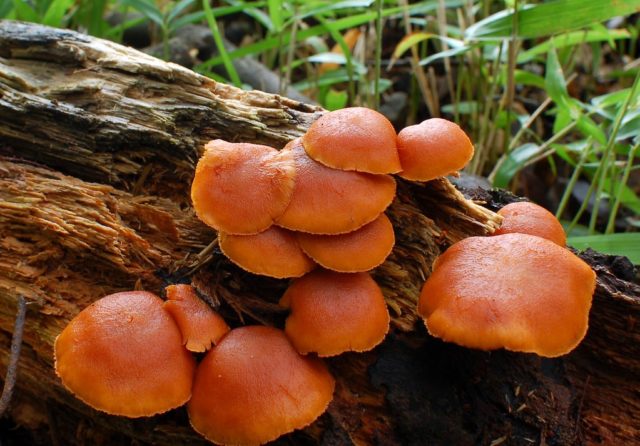
Fruiting bodies are poorly understood, therefore they are classified as inedible.
Spruce moth, similar to the penetrating hymnopil, grows in whole groups on fallen trees in mixed plantings. Her hat is convex or bell-shaped in shape, smooth and dry. It is fibrous in structure, yellowish or brown in color, with various shades of brown, with darkening in the center.
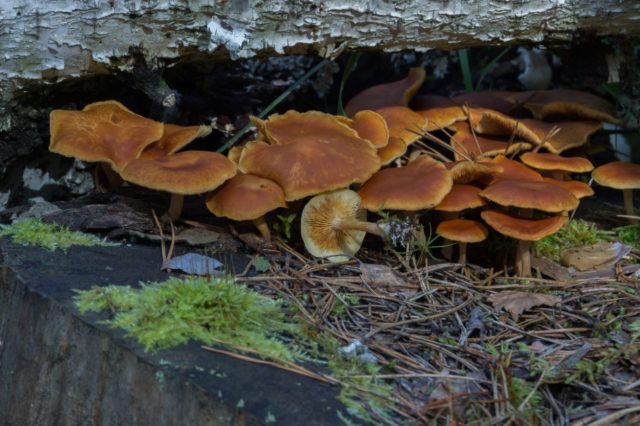
The moth plates are wide and thin, changing color from light amber to brown as the fruiting body grows
The leg is slightly curving, the remains of the bedspread remain on it. It is brown in color, but gradually becomes creamy. If you cut it, it turns brown.The pulp is firm, golden in color. The mushroom smells specifically: an unpleasant, sharp aroma with sourness. The fire is bitter in taste, inedible.
Where the penetrating hymnopil grows
The fungus grows everywhere, giving preference to conifers. Fruit bodies can be found both on living trees and on their remains. The duration of fruiting is from August to November.
Is it possible to eat a penetrating hymnopil
Fruit bodies have a bitter taste. They are little studied, there is no exact information about their toxicity. They are unsuitable for food, they are classified as inedible.
Conclusion
Penetrating hymnopil is a beautiful but inedible mushroom. Its flesh is bitter. It is found everywhere from August to November, prefers conifers.








